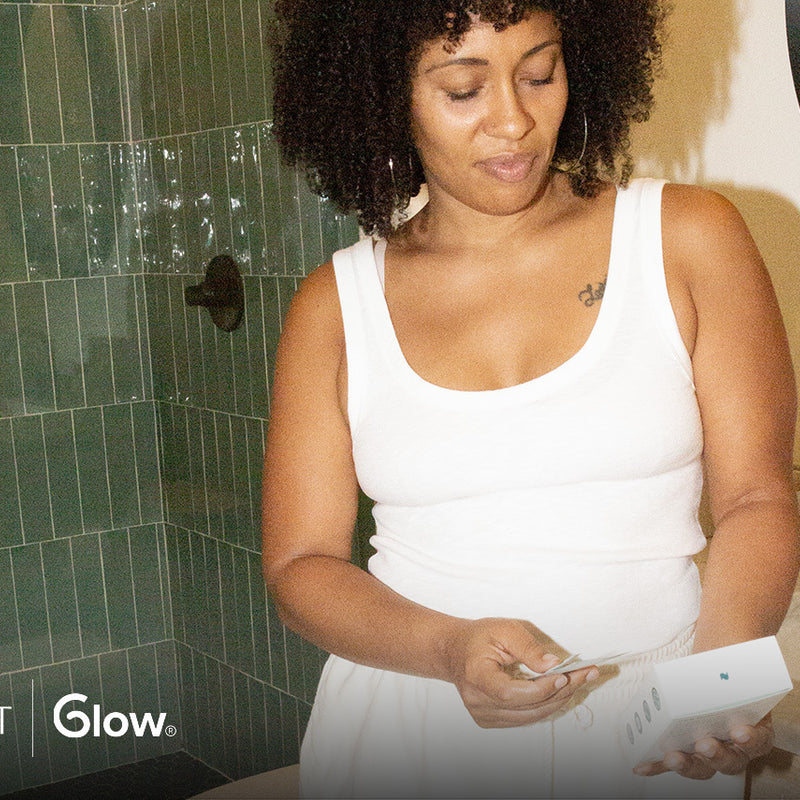How Many Children Should I Have?

Questioning your ideal family size, birthing choices, and financial considerations? How many children is optimal? And is there even a right answer? Hopefully this guide can help!
By Lauren Butia. Reviewed by Dr. Kenosha Gleaton
The short answer: there is no one-size-fits-all answer when it comes to family size. But, we can go through all the pros and cons presented in various medical articles that may help you make your own informed decision.
How Many Children Can a Woman Have?
From a biological standpoint, one study shows that without fertility treatments, the average woman should try to conceive before 32 years old if aspiring to have one child, 27 for two children, and 23 for three. [1] This is because as a woman ages, the number and quality of eggs make it increasingly more difficult. These recommendations were created from data using a computer simulation model of fertility; keep in mind that many women achieve their dream family size well after these ages.
Of course, there are other considerations beyond biology. With scientific advancement in fertility treatments, families are now able to conceive far past what’s possible without assisted reproductive technology (ART). According to data from the National Center for Health Statistics, birth rates among American women ages 40 to 44 have hit their highest point since 1967. [2] Births have also become increasingly common among women in their late 30s. Learn how to preserve fertility →
How Many Times Can a Woman Give Birth?
One study estimated a woman can have around 15 pregnancies in a lifetime, which is very uncommon today. [3] There is no established “unsafe” number of pregnancies; however, there are some loose guidelines around c-section births due to associated risks.
One study shows cesarean sections (c-sections) tend to have negative effects on maternal health. [4] This study also reveals that higher cesarean section births lead to an increased risk of morbidly adherent placenta (MAP) and scar pregnancy, making it difficult to have larger families without health risks. Specifically, the risk of placenta previa after just one cesarean section birth increases by 1%, and after two, it becomes 3%. [4] Thus, more cesarean-section births make it harder to have more children. A higher number of c-section births leads to an increased risk of morbidly adherent placenta (MAP) and scar pregnancy, making it difficult to have larger families without health risks. [4]
Another study was done in a rural Indian community where women were evaluated on postpartum quality of life (QOL) after the two types of births. [5] QOL included five categories: mobility, self-care, usual activities, pain or discomfort, and anxiety/depression, which the women could report using a scale from one to five (one being no or slight problems and five meaning extreme problems). [5] The results indicated that from the day of giving birth to 30 days afterward, the women who had a cesarean section experienced moderate to extreme problems in four of the health dimensions: mobility, self-care, usual activities, and pain or discomfort. [5] Anxiety and depression were the only health dimensions left out; however, both groups reported zero in this particular category. A subgroup within the vaginal birthing women had episiotomy which lowered their QOL, but only to a smaller extent when compared to cesarean section birth.
Even though these evaluations of women show that cesarean section birth proves to be more difficult than vaginal birth, but levels out a month after birth, it is important to note that there is conflicting research that says otherwise. Another study in California showed that a group of women including cesarean and vaginal birth had similar experiences in their fourth stage of labor. [6] The department attributed this finding to the fact that the group of women who had cesarean section births underwent an extensive informational process about the procedure weeks before giving birth. [6]
At the end of the day, it’s important to talk to a healthcare provider and find out what works best for you. You should always advocate for your wants and needs when receiving medical care. Read through thought starters for future or expecting parents with Natalist Parent Plans.
Other Ways to Have Children
Of course, having a biological child or birthing a child (biological or not) are just two ways to make a family. Other ways to grow a family include:
- Children born through egg donation or sperm donation
- Children born via gestational carriers (aka surrogates)
- Children brought into a family via foster or adoption
Benefits of a Small Family
Historically, larger families were more favored across the world; however, after the demographic transition to a more diverse population, small families have become more popular (in the US, the average number of children in a family has decreased from over 3.5 in the 1960s to under 2 today). [7] For example, some couples might prefer to have fewer children based on financial reasons alone. According to a 2017 report from the U.S. Department of Agriculture, the average cost of raising a child from birth through age 17 is whopping $233,610. [8]
Small families also seem to be less stressful. Two studies looked at the dynamics of family life for different sized families. They found that with an increasing number of children came more fighting between family members and more feelings of negativity about each other. [9] More children also brought more stress to each family member, even after controlling for economic status.
There may also be developmental benefits to having fewer children. One study from 1982 concluded that there is substantial documentation indicating that children from small families have a better developmental prognosis than children with many siblings. [10]
Benefits of a Large Family
Within a large family there are many psychological benefits and circumstantial conveniences. First, studies show that a larger family can actually offer more life satisfaction to the members of the family. [11] There is a positive correlation between psychological well-being, including a decrease in cancer risk and a higher number of family members. [12] This is because oxytocin levels increase while socializing with family, which passively inhibits the proliferation of cancer cells. [12] Within a larger family, there is more room for familial support and a healthy lifestyle. Larger families are not defined with a specific number of children, but there is a downward trend in cancer that plateaus after four in family size. [12]
Additionally, larger families show positive qualitative developmental effects in childhood and adolescence; while later in life, more quantitative aspects are seen such as the family creating a number of avenues of support that are vital for maintaining wellbeing. [12]
Another reason, under circumstantial conveniences, pertains to families that live in rural and remote areas. These families reported to have a higher IFS because of higher workability and comparatively low-cost for additional children. [13] The more children, the more able to provide labor, support the younger children, and care for parents in elderly age.
Key Takeaways
Having a small family is great because you get to give fewer children a higher quality of life if there are financial constrictions. Having a large family is great because of the psychological and health benefits that lead to an enriched life. Undeniably, there is much more to be taken into consideration, but you and your partner can discuss these points in order to find an answer that best suits your family goals. At the end of the day, there is no magic number of children to have; so whatever happens, your family will be beautiful!
Natalist is here to support you on your family planning journey every step of the way. Shop our prenatal vitamins for women, women’s fertility test, ovulation test kit, and more products for TTC, pregnancy, and postpartum!
References:
- Habbema JD, Eijkemans MJ, Leridon H, te Velde ER. Realizing a desired family size: when should couples start?. Hum Reprod. 2015;30(9):2215-2221. doi:10.1093/humrep/dev148
- Birth Data. Centers for Disease Control and Prevention. December 2023. https://www.cdc.gov/nchs/nvss/births.htm
- Sharma, Uma. Hou, Chia-Yi. How many children you can have in a lifetime. Business Insider. December 2018. https://www.businessinsider.com/how-many-children-you-can-have-lifetime-2018-11
- Saleh AM, Dudenhausen JW, Ahmed B. Increased rates of cesarean sections and large families: a potentially dangerous combination. J Perinat Med. 2017;45(5):517-521. doi:10.1515/jpm-2016-0242
- Kohler S, Sidney Annerstedt K, Diwan V, et al. Postpartum quality of life in Indian women after vaginal birth and cesarean section: a pilot study using the EQ-5D-5L descriptive system. BMC Pregnancy Childbirth. 2018;18(1):427. Published 2018 Oct 29. doi:10.1186/s12884-018-2038-0
- Schindl M, Birner P, Reingrabner M, Joura E, Husslein P, Langer M. Elective cesarean section vs. spontaneous delivery: a comparative study of birth experience. Acta Obstet Gynecol Scand. 2003;82(9):834-840. doi:10.1034/j.1600-0412.2003.00194.x
- Livingston, Gretchen. Is U.S. fertility at an all-time low? Two of three measures point to yes. Pew Research Center. May 2019. https://www.pewresearch.org/fact-tank/2019/05/22/u-s-fertility-rate-explained/
- Lino, Mark. The Cost of Raising a Child. U.S. Department of Agriculture. January 2017. https://www.usda.gov/media/blog/2017/01/13/cost-raising-child
- Spraggins, Christa. How a second child affects your entire life, according to research. Research Addict. November 2018. https://researchaddict.com/second-child/
- Polit DF. Family size and child development. Draper Fund Rep. 1982;(11):19-22.
- Fuller-Iglesias HR, Webster NJ, Antonucci TC. The complex nature of family support across the life span: Implications for psychological well-being. Dev Psychol. 2015;51(3):277-288. doi:10.1037/a0038665
- You W, Rühli FJ, Henneberg RJ, Henneberg M. Greater family size is associated with less cancer risk: an ecological analysis of 178 countries. BMC Cancer. 2018;18(1):924. Published 2018 Sep 26. doi:10.1186/s12885-018-4837-0
- Costa ME, Trumble B, Kaplan H, Gurven MD. Child nutritional status among births exceeding ideal family size in a high fertility population. Matern Child Nutr. 2018;14(4):e12625. doi:10.1111/mcn.12625
Originally published September 01, 2020. Updated for accuracy and relevancy January 5 2024.
Dr. Kenosha Gleaton is board-certified in gynecology and obstetrics and is the Medical Advisor of Natalist. She received her MD from MUSC and completed her residency at Carolinas Medical Center in Charlotte, NC.
Dr. Gleaton is passionate about women, health equity, and mentoring. She is the CEO of The EpiCentre, an OBGYN spa-like practice, and is a Clinical faculty member of Charleston Southern University. She is also a member of the American College of Obstetrics & Gynecology, the American Association of Gynecologic Laparoscopists, and the American Association of Professional Women.
Reach Out, We're Here
Have questions about your order or products? For the speediest answer, check out our FAQ section. Need something else? Come find us below.
Please keep in mind our regular business hours; Monday-Friday, 9am-5pm CT.
Customer Support
support@natalist.com
Press Inquiries
media@everlyhealth.com
Business & Partnerships
team@natalist.com
Affiliates + Influencers
team@natalist.com
Job Openings
Careers Page























